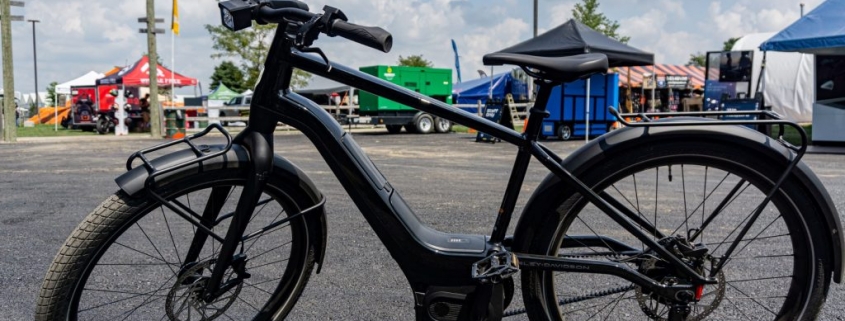Serial 1 RUSH/CTY Speed vs. Giant Revolt E+ Pro: Which Ebike Should You Ride?
Now that it’s launched the Serial 1 brand, Harley-Davidson isn’t only competing against electric motorcycles. It now has another EV category to compete in—electric bicycles, or ebikes. That means ‘legacy’ bicycle companies like Giant potentially have a new rival. But how well does a Serial 1 ebike compete against what Giant offers? For example, the Giant Revolt E+ Pro gravel bike? After riding both at the 2021 International Motorcycle Show in Chicago, the answer became clear.
2021 Serial 1 RUSH/CTY Speed vs. 2021 Giant Revolt E+ Pro: how does Harley-Davidson’s ebike compare to the Giant?
| Spec | 2021 Serial 1 RUSH/CTY Speed | 2021 Giant Revolt E+ Pro |
| Frame material | Aluminum | Aluminum |
| Fork material | Aluminum | Composite |
| Motor | Brose TF Mag permanent-magnet | Giant SyncDrive Pro permanent-magnet |
| Torque | 66 lb-ft | 59 lb-ft |
| Rear derailleur/hub | Enviolo AUTOMATiQ intelligent auto-shifting CVT hub | Shimano RD-RX812 GRX 11-speed |
| Final drive type | Carbon belt | Chain |
| Battery capacity | 706 Wh | 500 Wh |
| Claimed range | 25-115 miles | 25-90 miles |
| Top speed | 28 mph | 28 mph |
| Weight | 59 lbs (Large frame) | Unavailable (Road E+ Pro weighs 41.9 lbs, eBikeTips) |
| Price | $5599 | $5150 |
Both the 2021 Serial 1 RUSH/CTY Speed and the Giant Revolt E+ Pro are classified as Class 3 ebikes. That means they don’t have hand throttles—these ebikes are pedal-assist only. But because they’re Class 3, that assistance maxes out at 28 mph, rather than just 20 mph.
Also, both the RUSH/CTY Speed and Revolt E+ Pro have multiple riding modes that provide differing assistance levels. The rider changes these modes via the handlebar-mounted controls and LCD display. Both ebikes’ displays also show the remaining range, charge status, and current speed. The Giant ebike, though, has five modes, while the Harley-Davidson one only has four.
But, while the Serial 1 RUSH/CTY Speed and Giant Revolt E+ Pro both have aluminum frames and hydraulic disc brakes, they’re noticeably different ebikes.
How do the Serial 1 RUSH/CTY Speed and Giant Revolt E+ Pro ebikes differ?

RELATED: Vintage Electric’s E-Bikes Have Retro Style With Modern Speed
Harley-Davidson’s ebike is designed to be an urban commuter/cruiser-style bicycle. Hence its relatively relaxed frame geometry, maintenance-free carbon belt, and that rear hub, which works just like a car’s CVT. And it has several standard features that help with the former mission beyond just its frame geometry. It comes standard with two fender racks as well as integrated LED brake lights, taillights, and an LED headlight. Plus, the RUSH/CTY Speed has a lockable storage compartment and a light-up badge.
In contrast, the Giant Revolt E+ Pro is a more ‘traditional’ gravel ebike. So, while it has an integrated headlight, it lacks integrated taillights and a kickstand. Plus, while you can install fender racks and bottle cages, they’re optional extras. And instead of a CVT rear hub, it has a conventional Shimano derailleur. Also, unlike the Serial 1 ebikes, the Revolt E+ Pro’s battery isn’t removable for recharging.
However, its relative dearth of features compared to the RUSH/CTY Speed explains why the Giant ebike is lighter. Plus, while neither ebike has suspension, being a gravel bike, the Revolt E+ Pro’s composite fork and seat post are designed for off-pavement riding. Ditto, its aluminum frame and drop handlebars. Also, while the Giant Revolt E+ Pro’s battery isn’t removable, being integrated into the frame lowers the ebike’s center of gravity.
And while some of these differences may seem minor, when the rubber hits the road—er, gravel—they add up quickly.
They’re both electric bicycles, but IMS Chicago 2021 showed how different their riding experiences are
-

Entrance to IMS Outdoors Chicago 2021 ebike test circuit | Matthew Skwarczek, MotorBiscuit -

The 2021 Giant Revolt E+ Pro’s handlebar-mounted display and controller | Matthew Skwarczek, MotorBiscuit -
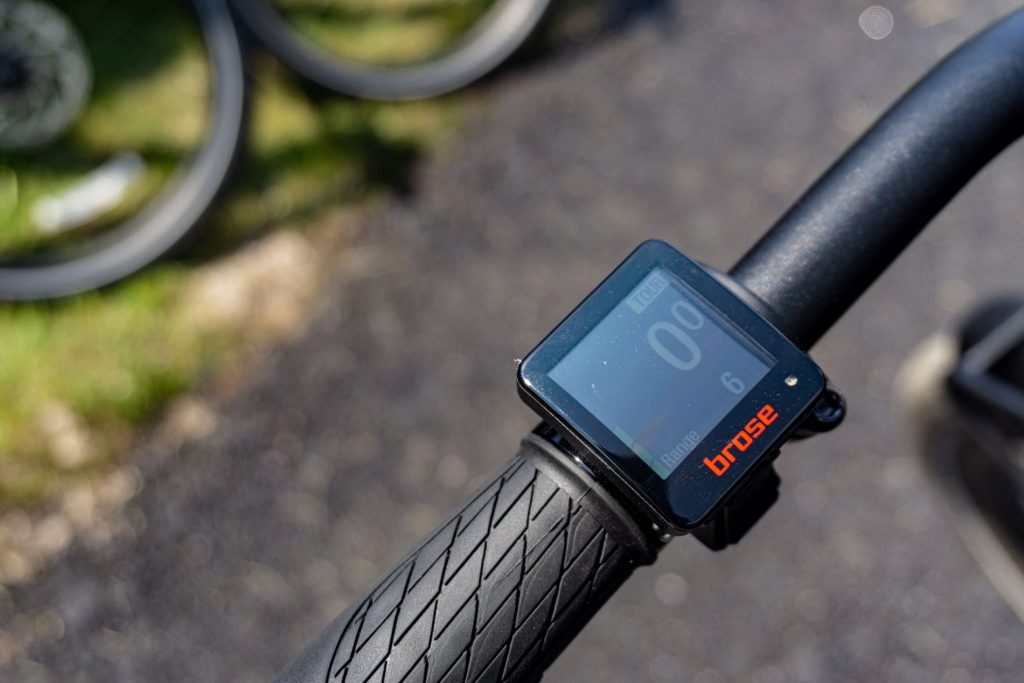
The Serial 1 RUSH/CTY Speed’s LCD display | Matthew Skwarczek, MotorBiscuit -
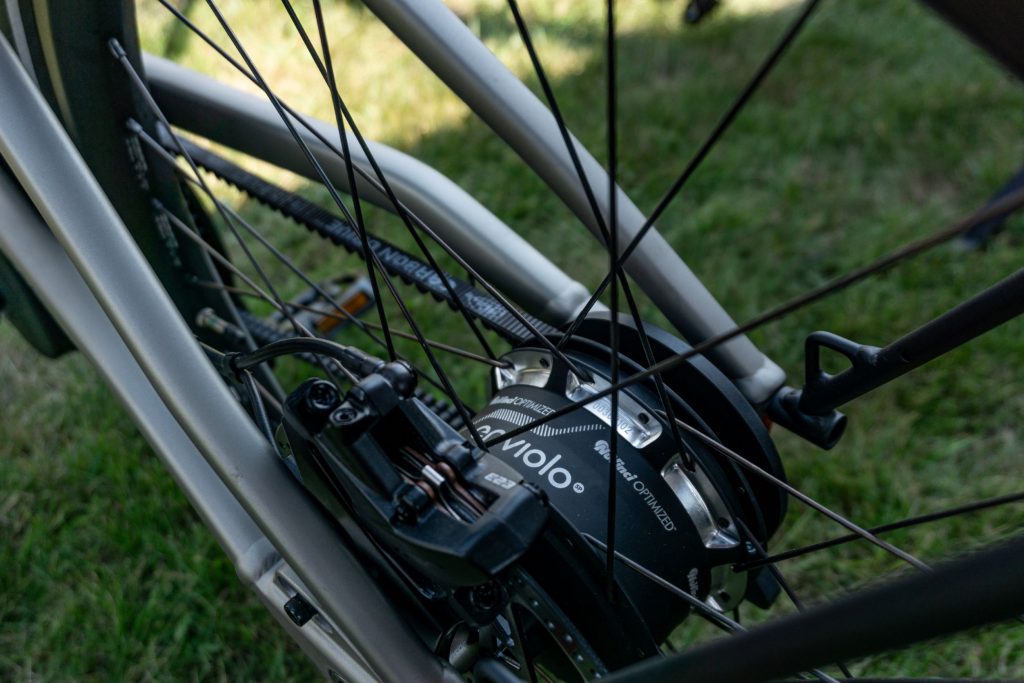
The Serial 1 RUSH/CTY Step-Over CVT rear hub closeup | Matthew Skwarczek, MotorBiscuit -
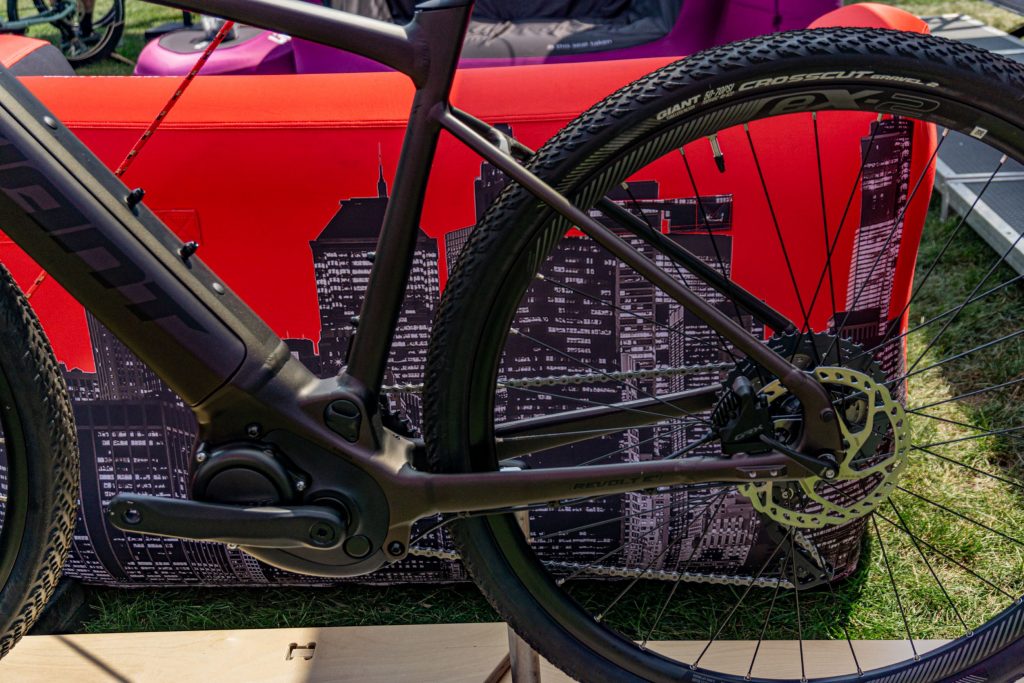
2021 Giant Revolt E+ Pro motor and rear derailleur closeup | Matthew Skwarczek, MotorBiscuit
The ebike demo course at IMS Outdoors Chicago 2021 was set up across several acres of gravel-covered farmland. Given that it’s explicitly a gravel ebike, the Giant Revolt E+ Pro was arguably better-suited to the terrain than the Serial 1 RUSH/CTY Speed. However, the Harley ebike handles surprisingly well off-road, The Verge says, in part due to its wide tires. Plus, the IMS Course wasn’t any more extreme than some forest-preserve paths I’ve ridden on, and commuter bikes ride those all the time.
Off-road handling aside, it’s clear that Giant and Harley-Davidson took different paths in ebike design. The Serial 1 RUSH/CTY Speed’s integrated lighting, belt drive, storage features, and CVT hub make it more appealing to casual cyclists and/or those buying an ebike for the first time. It’s comfortable even over bumpy gravel, and the electric motor kicks in so smoothly, I literally didn’t feel it at several points. This is cycling made easy, which is by no means a bad thing.
Meanwhile, the Giant Revolt E+ Pro is an ebike designed by a bicycle company, rather than a motorcycle one. Hence its chain drive, the Shimano derailleur, and the drop handlebars. And while Giant’s electric motor kicks in slightly less smoothly than the Harley one, it offers a more explosive launch, especially at higher assist levels. Part of that is no doubt due to its sportier design and lower weight.
Also, as a gravel ebike, the Revolt E+ Pro’s composite fork transmits less vibration than the Serial 1’s aluminum fork. And that integrated battery does make it feel and handle even lighter than the specs suggest. But, with its wider, flatter handlebars, the RUSH/CTY Speed is arguably more comfortable at lower speeds.
Which is the right ebike for you: the Serial 1 RUSH/CTY Speed or the Giant Revolt E+ Pro?
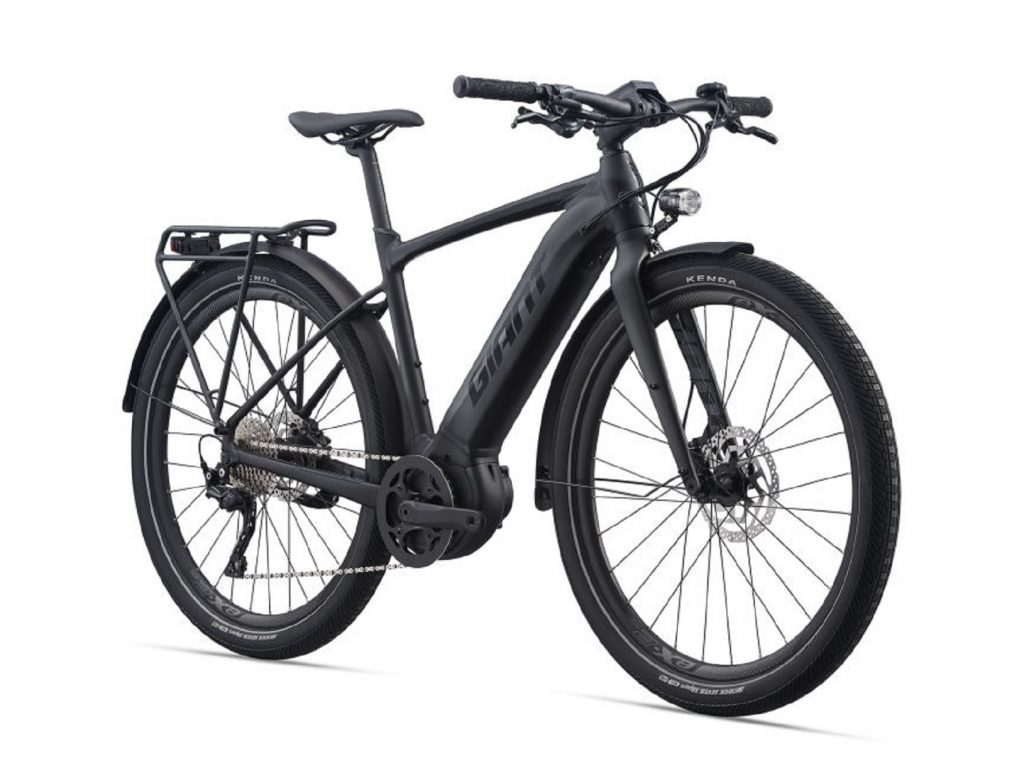
RELATED: Harley-Davidson Schwinn Sting-Ray-Like eBike Sells For $14,200
However, while these ebikes have different ethe, neither is inherently worse than the other. Admittedly, the Giant Revolt E+ Pro’s display is easier to read than the Serial 1 RUSH/CTY Speed’s display in bright sunlight. The Serial 1’s controls are less awkward to use when you’re riding, though. But both offer strong disc brakes, smooth assistance, and solid handling even on gravel.
That being said, these two ebikes likely won’t be cross-shopped. Someone who wants a gravel bike won’t be looking for a cruiser and vice versa. However, Giant does have a more direct Serial 1 rival, the $4100 FastRoad E+ EX Pro. It has all of the same features as the RUSH/CTY Speed and the same 28-mph top speed, albeit with a mechanical Shimano derailleur. And it has the same motor and battery as the Revolt E+ Pro.
Regardless, picking between Giant and Serial 1 boils down to a simple question. Do you want an ebike designed like a bicycle or more like a motorcycle? The Serial 1 models skew towards the latter, Motorcycle.com says, and Giant’s models towards the former. So, try both out, and see which kind of riding style you prefer.
Follow more updates from MotorBiscuit on our Facebook page.
RELATED: This $999 Ariel Rider E-Bike Offers a Tremendous Value
The post Serial 1 RUSH/CTY Speed vs. Giant Revolt E+ Pro: Which Ebike Should You Ride? appeared first on MotorBiscuit.

